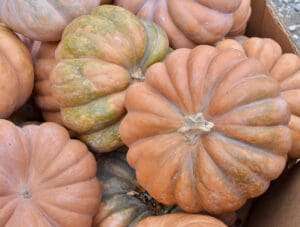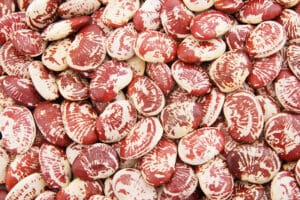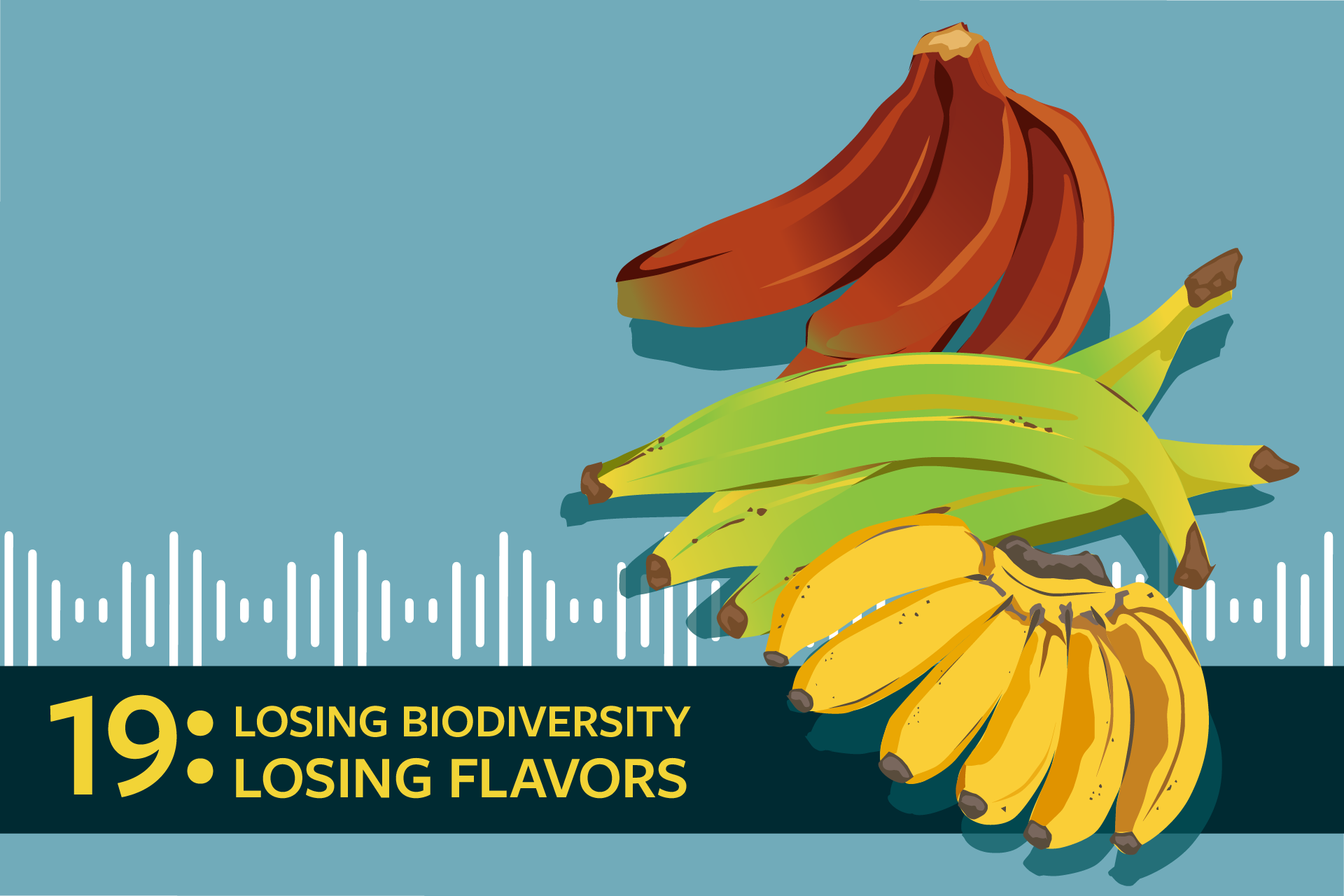Protecting endangered foods one bite at a time
In the late 1990s, “Louisiana Eats!” podcast host Poppy Tooker began working to revive a New Orleans delicacy: Creole cream cheese. She’d come across this fresh cheese, a French-influenced style indicative of New Orleans’ rich and diverse population, by way of her grandmother, but noticed it was on the decline as local dairy farms were overtaken by conglomerates. The motto of her campaign to get this local product back onto the table: “Eat it to save it.”
Today, thanks in part to Tooker’s advocacy, Creole cream cheese is once again commonplace, represented in markets and grocery stores in and around the coastal town and in establishments like Emeril Lagasse’s storied Creole restaurants. But in bringing a favorite New Orleans classic to new audiences, Tooker was also helping introduce Americans to a nascent (but historically rooted) approach to cooking and eating. Creole cream cheese couldn’t be the only delicious food that was both accessible and deserving of a reintroduction into the country’s culinary canon, she thought. Surely, there were other cheeses, other fruits, other recipes. “They were these precious indigenous ingredients with significant cultural ties that I knew I wanted to know more about,” Tooker says.
Tooker became an early member of Slow Food, a border-resistant movement spearheaded by an eclectic group of chefs, historians and home cooks around the world looking to record heritage foods and reintroduce them into the communities they come from. Slow Food originated in the 1980s in Italy, where a group defending the country’s traditional cuisine blocked the opening of a McDonald’s near the Spanish Steps in Rome. The spread of fast food had birthed a devoted group of civilians determined to protect local foodways and resist a shift towards industrialization and globalization. Slow Food became immensely popular in Italy and has since expanded to 160 countries, including Tanzania, Belarus, Peru and Kyrgyzstan, where in late January the newest Slow Food Presidium was created to support the endangered Kyrgyz Mountain horse, an ancient breed used for meat and milk.
The “eat it to save it” strategy is now part of Slow Food’s toolkit, with interpretations and practices varying by region. In South and Central America, where the movement of seeds is often policed, there are many seed libraries, says Slow Food USA director of programs Mara Welton. Throughout Central and West Africa, school and community gardens are helmed by local communities that have long respected the value of growing one’s own food, creating biodiversity and food security for younger generations. In Japan, where there’s a significant cultural respect for agriculture and plant life, certain items, such as dried persimmons (hoshigaki), are recognized as cultural properties and thus designated as national treasures. A crucial global project is Slow Food’s Ark of Taste, a living collection of small-scale, culturally significant, often-endangered foods that documents regional produce, grains, livestock, wild plants, insects and even sweeteners and seasonings, such as Chaco stingless bee honey from Bolivia and Malaysia’s Rimbàs black pepper. “They connect you to communities, they connect you to people, these foods,” Welton explains.
Some U.S. foods in the Ark of Taste are fairly recognizable. You might’ve heard of the Cherokee purple tomato; maybe even the Italian-originated Jimmy Nardello pepper; and most certainly the slightly sweet Wellfleet oyster. But others, like the Hidatsa Red bean, prevalent in the Dakotas, and the Ojai Pixie tangerines grown in Southern California, are newer additions to the ever-growing catalog. Success stories include Northern California’s Gravenstein apple, which in the 19th century became a signature crop of Sonoma County — especially Sebastopol, home of an annual fair since 1973. In recent years, however, orchard owners began to decamp to the increasingly profitable wine and marijuana industries. Slow Food’s Gravenstein apple presidium has been working for two decades to reverse this decline, enlisting Bay Area chefs to feature the fruit on their menus, building a community apple press for local residents and ultimately helping the remaining orchardists once again secure a sustainable livelihood.
Slow Food USA has compiled many of our country’s recovered food products and heirloom varieties in a recent book, “The Ark of Taste: Delicious and Distinctive Foods That Define the United States,” by food scholars Giselle Kennedy Lord and David S. Shields. Between informative entries, producer profiles and colorful illustrations, there are recipes from chefs and home cooks that highlight the unique culinary offerings the United States: Arkansas Black apple doughnuts with Tupelo honey, from “Foods of the Americas” authors Fernando and Marlene Divina; North Carolina chef Kurt D’Aurizio’s mojo-marinated Guinea hog; manoomin (wild rice) with grilled sunflower from Wild Bearies founder Elena Terry. It all points back to the “eat it to save it” mentality, promoting the regular use of heritage foods in everyday cooking and dining; many of the contributing chefs are also members of the Slow Food Cooks’ Alliance, which sees restaurants as key to creating awareness and demand. “To save [a food], what it really translates to is this,” says Welton: “If you don’t create a knowledge around it and interest in it, and if you don’t create a taste for it, and make people want to eat it, then it’s gonna die.”
“To save [a food], what it really translates to is this: If you don't create a knowledge around it and interest in it, and if you don't create a taste for it, and make people want to eat it, then it's gonna die.”
Shields, one of the book’s authors, has dedicated much of his career to the recovery of heritage foods. A longtime professor at the University of South Carolina and chairman of the Carolina Gold Rice Foundation, he has tracked down 45 ingredients over the course of 20 years, helping bring back into recognition and cultivation crops such as the Abada date, in California, and Carolina Gold rice — famously saved from the brink of extinction by a network of researchers, farmers and chefs. Regional figures such as Anson Mills founder Glenn Roberts and Gullah Geechee chef and foodways expert BJ Dennis have assisted in his decades-long search for underrepresented or forgotten ingredients, and, importantly, their origins. Research in South Carolina helped identify what had been mislabeled “flint corn” as the Catawba flour corn, which had been previously lost in the Catawba Nation, and unearthed a sugar cane variety called Purple Ribbon on South’s Carolina’s Sapelo Island, inhabited exclusively by African American descendants of those enslaved at a 19th-century sugar plantation. The plant is now a source of revenue for the community.
“One of the things we want to do is get everyone back their heritage ingredients,” says Shields. “If you have a plant that was yours, and it’s been lost — if it can be found, let’s put it back into the hands of the people.” As opposed to solely white researchers or scientists “discovering” different native species, diverse groups of community members and researchers can help recover seeds, reinstate Native names for indigenous foods and figure out how the “reintroduction” of an ingredient will benefit those who have contributed to its resilience and proliferation. Welton notes that, in recent years, many Slow Food chapters have made it a priority “to connect their farmers of color with the chef community” and other potential buyers.
So what does success look like for “eat it to save it”? Sometimes, it means a food once nearing extinction is made available at select farmers’ markets or specialty stores. If that sounds elitist, you’re not alone in your thinking: Even among those who advocate for the expansion of Slow Food practices, for example, the movement has regularly been critiqued as being inaccessible to some communities of color and other economically marginalized groups, with longtime members advocating for less expensive items and more public engagement. But often, the “eat it to save it” approach is less about getting new people to buy a given food and more about rekindling interest and creating access in the community it came from.
Examples of this can be found in the work of Indigenous food sovereignty movements in the U.S. and beyond. One Ark of Taste stalwart is the Southwest’s Navajo Churro sheep, a source of mutton and wool and once “a fixture of Diné life as central as corn,” according to Lord and Shields, was critically endangered by the late 1970s after decades of culls by the U.S. government; efforts to protect and revitalize the landrace sheep led to the creation of Slow Food’s Navajo Churro presidium, which now includes 11 Indigenous herders who have helped bring the breed back from extinction. Tepary beans, long used by the Indigenous peoples of the Southwest but on the decline after colonization as food systems were eroded, “were among the first foods the Tohono O’odham successfully reintroduced into cultivation 20 years ago in an effort to move away from the obesity- and diabetes-inducing Western diet,” Lord and Shields write, noting that the strategy was conceived both as a public health initiative and a reclamation of identity. The beans — which have a nutty flavor and come in white, black and many colors in between — are also available through Native-led projects like Ramona Farms and on the menus of Native chefs around the country: James Beard Award-winning Indigenous chef Sean Sherman pairs Tepary beans with scallops, chayote, epazote and chile at Owamni, in Minneapolis; at Th_Prsrv, a restaurant just outside Houston that celebrates Indigenous Thai and Indigenous American cuisine, the beans feature in a thoughtful interpretation of the Three Sisters.
For culinary historian Sarah Lohman, author of the recent book “Endangered Eating,” this work can be a vehicle for cultural understanding: “You can often connect with local communities in a way that you wouldn’t have otherwise,” she says. And creating appetites for heritage foods is by no means an impossible task. “It’s a very simple thing of putting an idea in someone’s head,” Lohman suggests. “One box of dates, one bag of rice, one pint of cider — those are all successes to me, because that means that some small producer is being supported and doing something that they love.”
Feeling inspired by the “eat it to save it” approach? Here are a few Ark of Taste ingredients you can use in your kitchen:

Squash from New York
Chef and restaurateur Fabrizio Facchini, a member of the Cooks’ Alliance, has been a longtime slow food advocate in both his native Italy and his current home of New York City. He features the Long Island Cheese pumpkin, a native squash variety, in a risotto recipe for the recent “Ark of Taste” book, pointing out that this winter squash gets its name not from its taste, but rather its appearance — the round, flattened squashes cultivated by Indigenous peoples across the Northeast looked, to colonists, like wheels of cheese. Still, the earthy richness does pair well with sharp cheeses like Parmigiano Reggiano.

Pork from Georgia
The origin story of the Ossabaw Island hog is one for the history books: Spanish colonists, anticipating shipwrecks, purposefully populated various deserted islands in the Americas with pigs that could provide food for future stranded sailors. Among those islands was one off the coast of Georgia, where the descendants of those Iberian black pigs have been roaming for up to 500 years. The hogs of Ossabaw Island have evolved to be smaller but with a high percentage of body fat, making their meat great for barbecue and charcuterie and earning them the praise of chefs like Tom Colicchio. The island itself is now a nature preserve, but in past decades small numbers of the critically endangered breed were brought to the mainland — populations now stewarded and sold by small farms in the region.

Beans from the Southwest
Rancho Gordo founder Steve Sando literally wrote the book on beans and has spread the gospel of the globally beloved crop for years. He describes Christmas Lima beans, a colorful, mottled American variety popular in the Southwestern U.S., as a “gateway bean.” Brought to the U.S. from Peru in the 19th century, Lima beans are a different species from the common bean, Sando explains, offering a slightly vegetal flavor; the Christmas variety is more substantial, more savory, less “cloying sweet” than its Lima relatives. Sando has a hearty recipe that pairs the meaty beans with an elegantly sweet gorgonzola sauce.
Get the latest food news from FoodPrint.
By subscribing to communications from FoodPrint, you are agreeing to receive emails from us. We promise not to email you too often or sell your information.
Top photo: A Cherokee purple tomato on the vine. Photo by Jes/Adobe Stock.
More Reading
15+ ideas for delicious meatless grilling
July 1, 2025
4 Tips for Stretching Your Food Dollars
April 16, 2025
How to use extra onions
April 9, 2025
Our latest podcast episode on pistachios: The making of a food trend
April 1, 2025
This vegan tiramisu will bring you joy
March 11, 2025
For lessons in thrifty, climate-friendly cooking, look to vintage cookbooks
March 10, 2025
Americans love olive oil. Why doesn't the U.S. produce more of it?
February 28, 2025
How to fight household food waste? Join our Eat Down Your Pantry Challenge!
February 13, 2025
During a period of egg chaos, egg replacements for (almost) any situation
February 7, 2025
Ways to go meatless — or less-meat — in January
January 15, 2025

